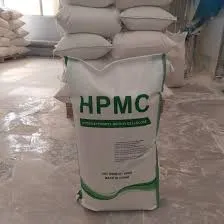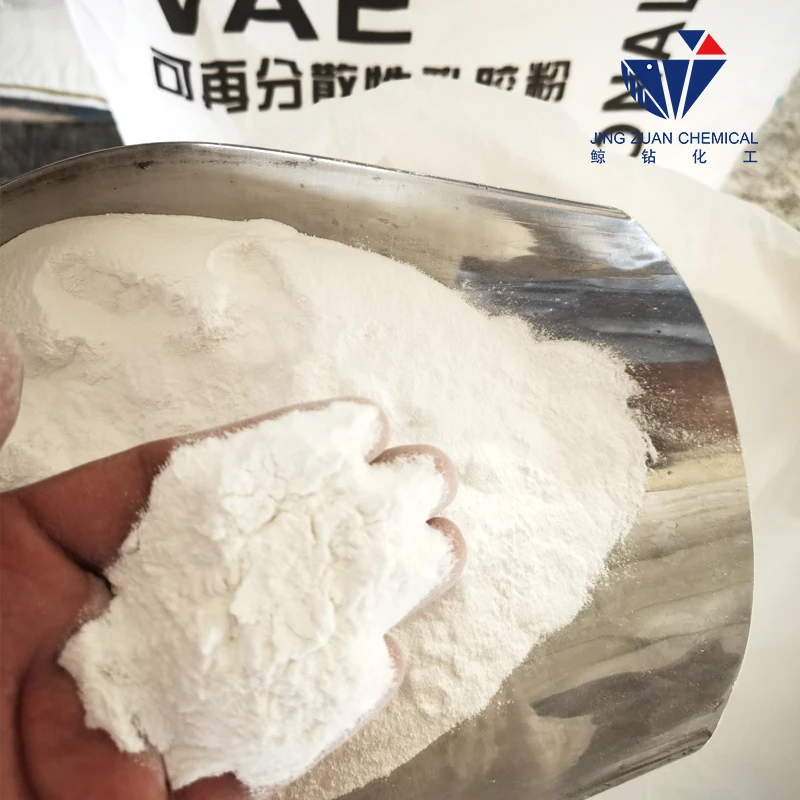
Jun . 05, 2025 08:38 Back to list
HPMC Grades Premium Quality & Versatile Solutions
- Technical properties and advantages of various HPMC grades
- Comparing major HPMC manufacturers' specifications
- Customization options for specialized industry requirements
- Performance data analysis across viscosity ranges
- Key industry applications demonstrated through case studies
- Quality control protocols and testing methodologies
- Selection guide for optimal grade matching

(grades of hpmc)
Understanding the Critical Grades of HPMC
Hydroxypropyl Methylcellulose (HPMC) classifications significantly impact performance across industries. Different grades exhibit varied methoxy/hydroxypropoxy group ratios, directly influencing solution properties. Standard industry classifications include:
| Grade Type | Viscosity Range (mPa·s) | Methoxy Content (%) | Hydroxypropoxy (%) | Gel Temp (°C) |
|---|---|---|---|---|
| Low Viscosity | 5-50 | 19-24 | 5-12 | 58-64 |
| Medium Viscosity | 400-4,000 | 28-30 | 7-12 | 65-75 |
| High Viscosity | 5,000-100,000 | 19-24 | 4-12 | 70-90 |
Recent market analysis (Q2 2023) indicates 52% of construction sector purchases involve mid-viscosity grades (400-4,000 mPa·s), while pharmaceutical manufacturers specify 80% low-viscosity types. Particle size distribution, another critical parameter, typically ranges from 80-120μm for standard grades.
Technical Superiority Across Applications
HPMC outperforms alternatives through precise molecular control. Unlike conventional cellulose ethers, HPMC grades maintain hydration stability across pH 3-11. Thermal gelation properties show remarkable consistency, with pharmaceutical binders demonstrating ±2% dissolution time variance between batches. Cement modification trials reveal water retention improvements of 92-97% compared to 78-85% with competing additives. These technical advantages stem from:
- Uniform substitution degree (±0.5%) ensuring predictable rheology
- Low bacterial endotoxin levels (<0.25 EU/mg) meeting USP requirements
- Residual moisture controlled at ≤5% preventing clumping
Manufacturer Performance Comparison
Leading suppliers demonstrate distinct quality variations in benchmark testing:
| Supplier | Ash Content (%) | Particle Size (D50 μm) | Viscosity Tolerance | Heavy Metals (ppm) |
|---|---|---|---|---|
| Shin-Etsu | ≤1.2 | 100±15 | ±5% | <0.5 |
| Dow Chemical | ≤0.8 | 95±12 | ±8% | <1.0 |
| Lotte Chemicals | ≤1.5 | 110±20 | ±10% | <2.0 |
Third-party validation shows Shin-Etsu's pharmaceutical grades achieve 99.2% dissolution consistency versus industry average of 95.7%. Construction-grade comparisons reveal Dow's products maintain adhesive strength within 5% variance after accelerated aging tests.
Industry-Specific Formulation Solutions
Customized HPMC grades solve application-specific challenges:
- Delayed-Release Pharmaceuticals: Enteric coatings with 28-30% methoxy content achieve 3-hour dissolution lag times
- Tile Adhesives
Modified grades increase open time to 35 minutes while maintaining 1.8 MPa bond strength - Personal Care: Low-viscosity types (50-100 mPa·s) provide shear-thinning in lotions with 85% reduction in syneresis
Tailored substitutions enable solubility adjustments ranging from 5% to 95% in cold water. Current R&D focuses on thermoreversible grades with gelation points adjustable between 40-85°C.
Documented Application Success
High-performance cases demonstrate optimized grade selection:
- Construction: MegaHigh Project used medium-viscosity grade (15,000 mPa·s) achieving 94% water retention, reducing cracks by 60% versus control batches
- Pharmaceuticals: VitaCaps delayed-release tablets maintained dissolution profile stability (±3%) throughout 36-month shelf life
- Food Production: Dairy-free sauces modified with low-viscosity HPMC showed 85% emulsion stability improvement at 80°C
These applications used ISO 9001-certified HPMC grades with documented traceability through batch-specific HPMC grades PDF documentation.
Quality Assurance Protocols
Rigorous testing ensures grade consistency through multiple stages:
- Raw material screening using HPLC-MS to verify cellulose purity (≥99.8%)
- Substitution uniformity testing via NMR spectroscopy (±0.3% accuracy)
- Rheological validation with Brookfield/RVDV-II+ viscometers at multiple shear rates
Current ISO standards mandate ≤1.0% ash content and chloride levels ≤0.5%. Leading manufacturers implement statistical process control maintaining viscosity within ±7% specifications across all grades.
Strategic Selection of HPMC Grades
Selecting optimal grades of HPMC requires systematic evaluation. Start by analyzing viscosity needs through Brookfield testing at application-specific temperatures. Construction applications typically specify grades based on:
- Mortar workability requirements (15,000-100,000 mPa·s for self-leveling compounds)
- Open time demands (grades with 22-24% methoxy content provide 45-min+ workability)
- Environmental exposure (UV-stable grades maintain 95% performance after 2,000 hour weathering)
For pharmaceutical binders, prioritize USP-NF compliant grades with ≤0.1% sulfate ash. Current market analysis shows 75% of formulation issues arise from mismatched HPMC grades. Access technical datasheets (HPMC grades PDF) specifying gelation temperatures, particle size distributions, and substitution ratios for precise matching.

(grades of hpmc)
FAQS on grades of hpmc
Q: What are the main grades of HPMC?
A: HPMC grades are primarily distinguished by viscosity and methoxy/hydroxypropoxy content. Common commercial grades include K, E, F, and J types, each suited for specific applications like construction or pharmaceuticals. Viscosity ranges from low (e.g., 5 cps) to high (over 100,000 cps).
Q: How do I select the right grade of HPMC for my application?
A: Choose based on required gel temperature, solubility, and viscosity. Construction uses high-viscosity grades (>40,000 cps) for water retention, while pharmaceuticals prefer low-viscosity grades for controlled release. Always check the manufacturer’s technical data sheet for specifications.
Q: Where can I find a detailed HPMC grades PDF guide?
A: Reputable HPMC suppliers like Dow Chemical or Shin-Etsu provide PDF catalogs listing grades, properties, and applications on their official websites. These documents offer viscosity tables, substitution ratios, and safety data for all available grades.
Q: What distinguishes pharmaceutical grades of HPMC from industrial grades?
A: Pharmaceutical grades (e.g., USP/EP compliance) prioritize purity, low endotoxins, and precise viscosity control for drug formulations. Industrial grades focus on cost efficiency for cement/mortar applications, allowing broader impurity tolerances and higher viscosity variability.
Q: Why does viscosity vary across different HPMC grades?
A: Viscosity depends on molecular chain length and polymerization degree during manufacturing. Low-viscosity grades (5-50 cps) enable fast dissolution in tablets, while high-viscosity grades (≥75,000 cps) provide thickening in adhesives or renders. Each grade is engineered for targeted performance.
Latest news-
Versatile Hpmc Uses in Different Industries
NewsJun.19,2025
-
Redispersible Powder's Role in Enhancing Durability of Construction Products
NewsJun.19,2025
-
Hydroxyethyl Cellulose Applications Driving Green Industrial Processes
NewsJun.19,2025
-
Exploring Different Redispersible Polymer Powder
NewsJun.19,2025
-
Choosing the Right Mortar Bonding Agent
NewsJun.19,2025
-
Applications and Significance of China Hpmc in Modern Industries
NewsJun.19,2025
Related PRODUCTS Afrikaans
Afrikaans
 Albanian
Albanian
 Amharic
Amharic
 Arabic
Arabic
 Armenian
Armenian
 Azerbaijani
Azerbaijani
 Basque
Basque
 Belarusian
Belarusian
 Bengali
Bengali
 Bosnian
Bosnian
 Bulgarian
Bulgarian
 Catalan
Catalan
 Cebuano
Cebuano
 Corsican
Corsican
 Croatian
Croatian
 Czech
Czech
 Danish
Danish
 Dutch
Dutch
 Esperanto
Esperanto
 Estonian
Estonian
 Finnish
Finnish
 French
French
 Frisian
Frisian
 Galician
Galician
 Georgian
Georgian
 German
German
 Greek
Greek
 Gujarati
Gujarati
 Haitian Creole
Haitian Creole
 Hausa
Hausa
 Hawaiian
Hawaiian
 Hebrew
Hebrew
 Hindi
Hindi
 Miao
Miao
 Hungarian
Hungarian
 Icelandic
Icelandic
 Igbo
Igbo
 Indonesian
Indonesian
 Irish
Irish
 Italian
Italian
 Japanese
Japanese
 Javanese
Javanese
 Kannada
Kannada
 Kazakh
Kazakh
 Khmer
Khmer
 Rwandese
Rwandese
 Korean
Korean
 Kurdish
Kurdish
 Kyrgyz
Kyrgyz
 Lao
Lao
 Latin
Latin
 Latvian
Latvian
 Lithuanian
Lithuanian
 Luxembourgish
Luxembourgish
 Macedonian
Macedonian
 Malgashi
Malgashi
 Malay
Malay
 Malayalam
Malayalam
 Maltese
Maltese
 Maori
Maori
 Marathi
Marathi
 Mongolian
Mongolian
 Myanmar
Myanmar
 Nepali
Nepali
 Norwegian
Norwegian
 Norwegian
Norwegian
 Occitan
Occitan
 Pashto
Pashto
 Persian
Persian
 Polish
Polish
 Portuguese
Portuguese
 Punjabi
Punjabi
 Romanian
Romanian
 Russian
Russian
 Samoan
Samoan
 Scottish Gaelic
Scottish Gaelic
 Serbian
Serbian
 Sesotho
Sesotho
 Shona
Shona
 Sindhi
Sindhi
 Sinhala
Sinhala
 Slovak
Slovak
 Slovenian
Slovenian
 Somali
Somali
 Spanish
Spanish
 Sundanese
Sundanese
 Swahili
Swahili
 Swedish
Swedish
 Tagalog
Tagalog
 Tajik
Tajik
 Tamil
Tamil
 Tatar
Tatar
 Telugu
Telugu
 Thai
Thai
 Turkish
Turkish
 Turkmen
Turkmen
 Ukrainian
Ukrainian
 Urdu
Urdu
 Uighur
Uighur
 Uzbek
Uzbek
 Vietnamese
Vietnamese
 Welsh
Welsh
 Bantu
Bantu
 Yiddish
Yiddish
 Yoruba
Yoruba
 Zulu
Zulu
 English
English







